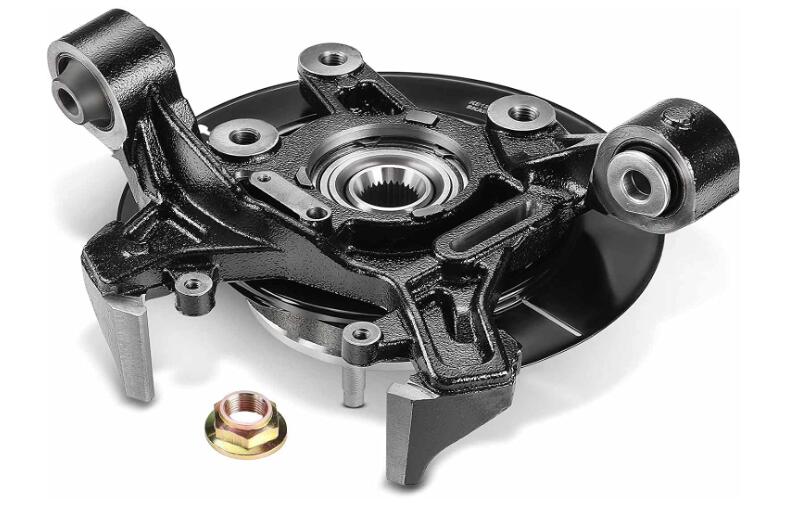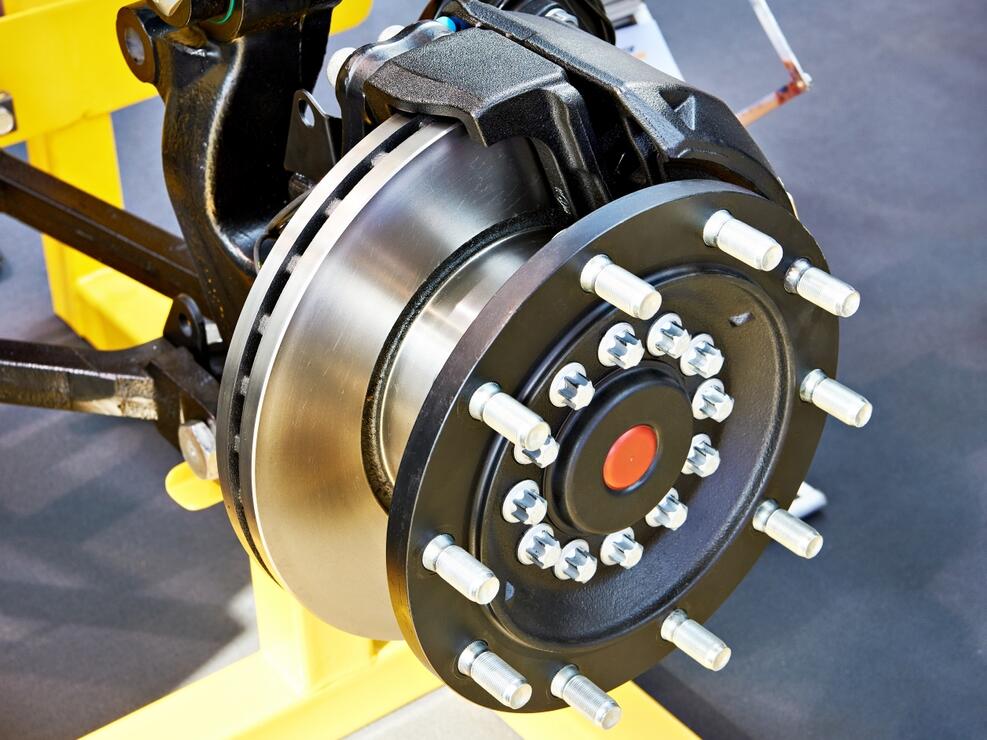Introduction:
Wheel hub bearings, a cornerstone of automotive design, shoulder the weighty responsibility of supporting vehicle loads and ensuring a smooth ride.
Central to understanding their capacity and performance is the concept of load ratings.
Delving into the intricacies of these ratings isn’t merely academic – it’s fundamental for ensuring safety, longevity, and optimal performance.
This comprehensive guide dissects the complex world of wheel hub bearing load ratings, providing valuable insights for automotive professionals and enthusiasts alike.

1. The Essence of Load Ratings: A Primer
At the heart of load ratings lies understanding the maximum load a bearing can sustain. But it is more complex than a single number.
Static Load Rating (C0): This represents the maximum load a bearing can handle while stationary.
Exceeding this value can permanently deform the approach, compromising its structural integrity.
Dynamic Load Rating (C): A more intricate concept, the dynamic load rating denotes the radial load under which a bearing will achieve an average basic rating life of one million revolutions.
It’s pivotal for approaches in motion and provides an understanding of how they’ll perform under varying operational loads.

2. Factors Influencing Load Ratings
Load ratings aren’t pulled from thin air; they’re meticulously calculated based on various factors.
Material Composition: The metallurgical makeup of a bearing, as provided by manufacturers like Wana Auto Parts Co., Ltd., directly impacts its strength and durability.
For instance, high-carbon steels or specialized alloys offer higher load ratings than their counterparts.
Bearing Geometry: The size, shape, and arrangement of delivering components (like balls or rollers) play a significant role.
Larger contact areas can distribute loads better, potentially boosting the bearing’s load ratings.
Lubrication: A well-lubricated bearing can reduce friction and wear, effectively increasing its capacity to handle loads, especially in dynamic scenarios.

3. Load Rating vs. Bearing Life
It’s essential to differentiate between a bearing’s load rating and its expected operational life.
Basic Load Rating Life: As mentioned, the dynamic load rating gives us an average life of one million revolutions.
However, this is a statistical concept, with approximately 90% of identical bearings reaching or exceeding this lifespan.
Adjusted Life Rating: Real-world scenarios seldom align with lab conditions.
Factors like lubrication, contamination, installation accuracy, and temperature can influence bearing life.
Hence, professionals often rely on adjusted life ratings, accounting for these variables, for a more accurate lifespan estimate.

4. Application-Specific Load Ratings
Every vehicle, from family sedans to heavy-duty trucks, has unique load requirements.
Recognizing this, the bearing industry has cultivated application-specific ratings.
Supplementary Load Ratings: Additional ratings might be provided for bearings expected to manage non-standard loads (like axial loads in wheel applications).
These supplementary figures guide engineers in ensuring that bearings are aptly suited for specialized tasks.
Equivalent Dynamic Load: Not all loads are constant. Vehicles experience varying forces while accelerating, cornering, or traveling on uneven surfaces.
An ‘equivalent dynamic load’ offers a hypothetical load that would have the same impact on bearing life as these varying loads.

5. Safety Factors and Their Implication
Load ratings provide essential guidance, but it’s prudent to include safety margins in engineering.
Essential Static Safety Factor: Engineers can gauge the safety margin in static scenarios by comparing the static load rating to the maximum anticipated load.
A higher safety factor implies a lower risk of permanent bearing deformation.
Dynamic Safety Factor: Similarly, comparing the equivalent dynamic load to the dynamic load rating in emotional conditions provides insights into the bearing’s safety margin during motion.
This factor is pivotal for ensuring a smooth, trouble-free ride.

6. The Significance of Accurate Load Predictions
Accurate load predictions are crucial before selecting a bearing based on its load ratings.
Operational Analysis: Engineers conduct thorough analyses to predict the various loads a vehicle might encounter.
This includes weight distribution, torque forces, braking, and environmental factors.
Predictive Modelling: Advanced software models can simulate diverse driving scenarios, helping professionals anticipate dynamic load changes.
Such predictions, backed by empirical data, are invaluable in choosing the correct bearing for the job.

7. Real-world Scenarios and Load Ratings
While lab tests and theoretical computations provide a foundational understanding of load ratings, real-world applications can offer varying challenges.
Varying Road Conditions: From smooth highways to rugged off-road terrains, the type of road impacts the load exerted on the bearing.
For instance, an approach might sustain higher loads on a bumpy road due to increased vertical forces.
Driving Behaviors: Aggressive driving, such as sudden acceleration and sharp cornering, can introduce unexpected loads on the bearings.
Such behaviors can occasionally push bearings beyond their anticipated dynamic load ratings, emphasizing the importance of safety factors.
Environmental Factors: Factors like temperature fluctuations, humidity, and exposure to water or contaminants can indirectly influence the effective load on a bearing.
For instance, inadequate lubrication due to extreme cold can increase friction, affecting load-handling capability.

8. Load Ratings and Maintenance
Understanding load ratings is vital for the initial selection of bearings and plays a role in their maintenance and replacement schedules.
Predictive Maintenance: With insights into the operational loads a bearing is expected to endure and its corresponding load ratings, maintenance personnel can employ predictive maintenance strategies.
They can forecast potential failures by monitoring bearing performance and conditions and preemptively perform maintenance operations.
Replacement Criteria: When bearings approach their anticipated load rating life or show signs of wear and tear, it’s a clear indication for replacements.
Bearings consistently operating within their specified load ratings ensure optimal vehicle performance and longevity.

9. Advancements in Load Rating Determination
As technology progresses, the methodologies to determine load ratings evolve, becoming more precise and reflective of real-world scenarios.
Advanced Simulations: With the advent of computational fluid dynamics (CFD) and finite element analysis (FEA), engineers can now simulate complex load scenarios with high precision, refining load rating values.
Material Innovations: As metallurgy advances, newer materials and alloys offer higher strength-to-weight ratios.
These innovations lead to bearings with enhanced load ratings, all while maintaining or even reducing their weight.
Real-time Load Monitoring: Emerging technologies, such as embedded sensors in bearings, allow for real-time monitoring of loads.
This ensures that bearings operate within their limits and provides valuable data to refine load rating determinations further.

Conclusion:
Deciphering the intricacies of wheel hub bearing load ratings is more than an academic endeavor; it’s a journey into the heart of automotive engineering and safety.
These ratings serve as a beacon, guiding automotive professionals in ensuring that vehicles are efficient but also safe and reliable.
At Wana Auto Parts Co., Ltd., spearheaded by industry experts like Orde Yuan, we remain committed to upholding the highest standards in bearing production, ensuring that every product aligns perfectly with its designated load ratings.
As the automotive landscape evolves, our resolve to stay at the forefront of knowledge, innovation, and quality remains as steadfast as ever.




